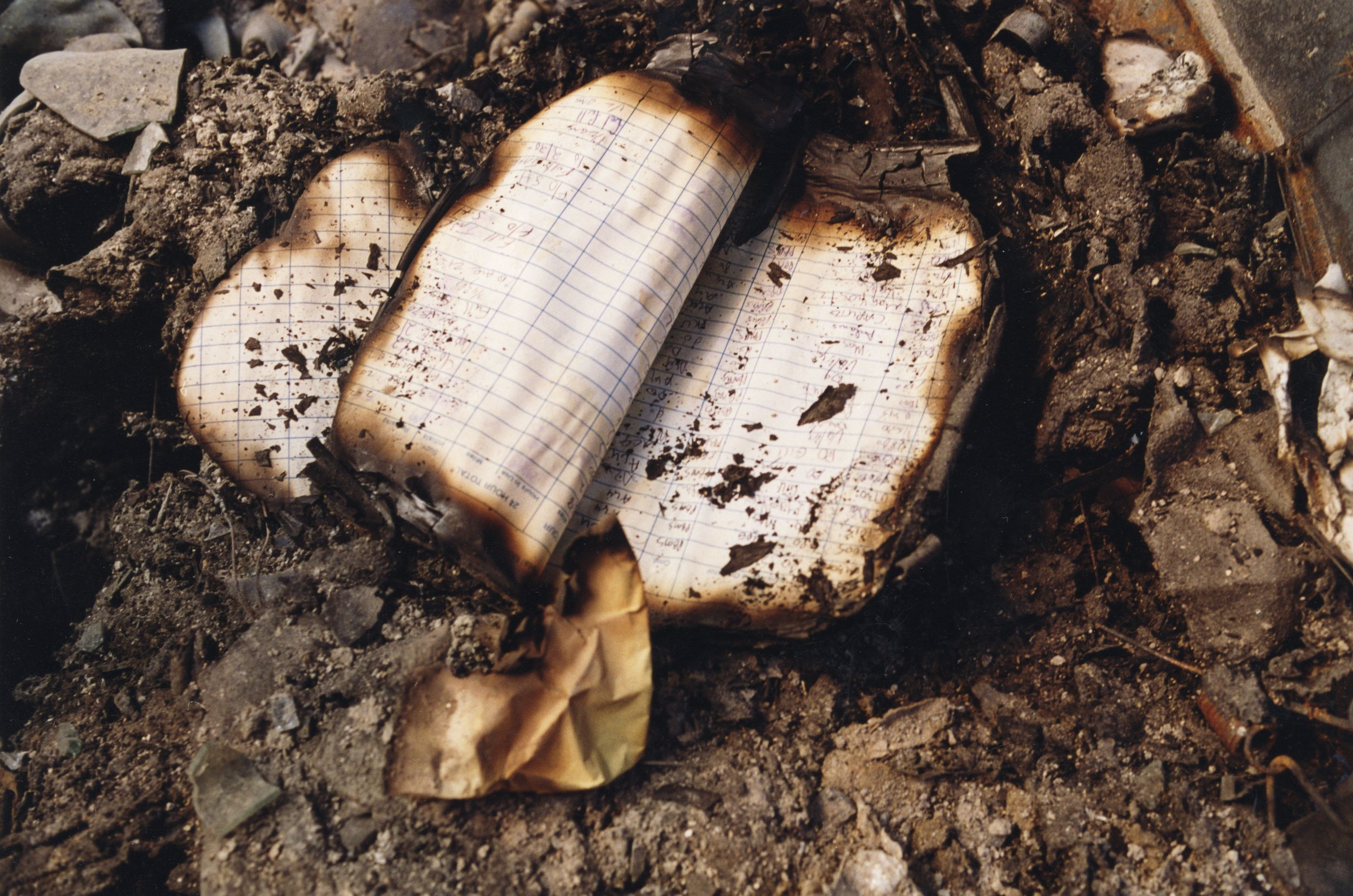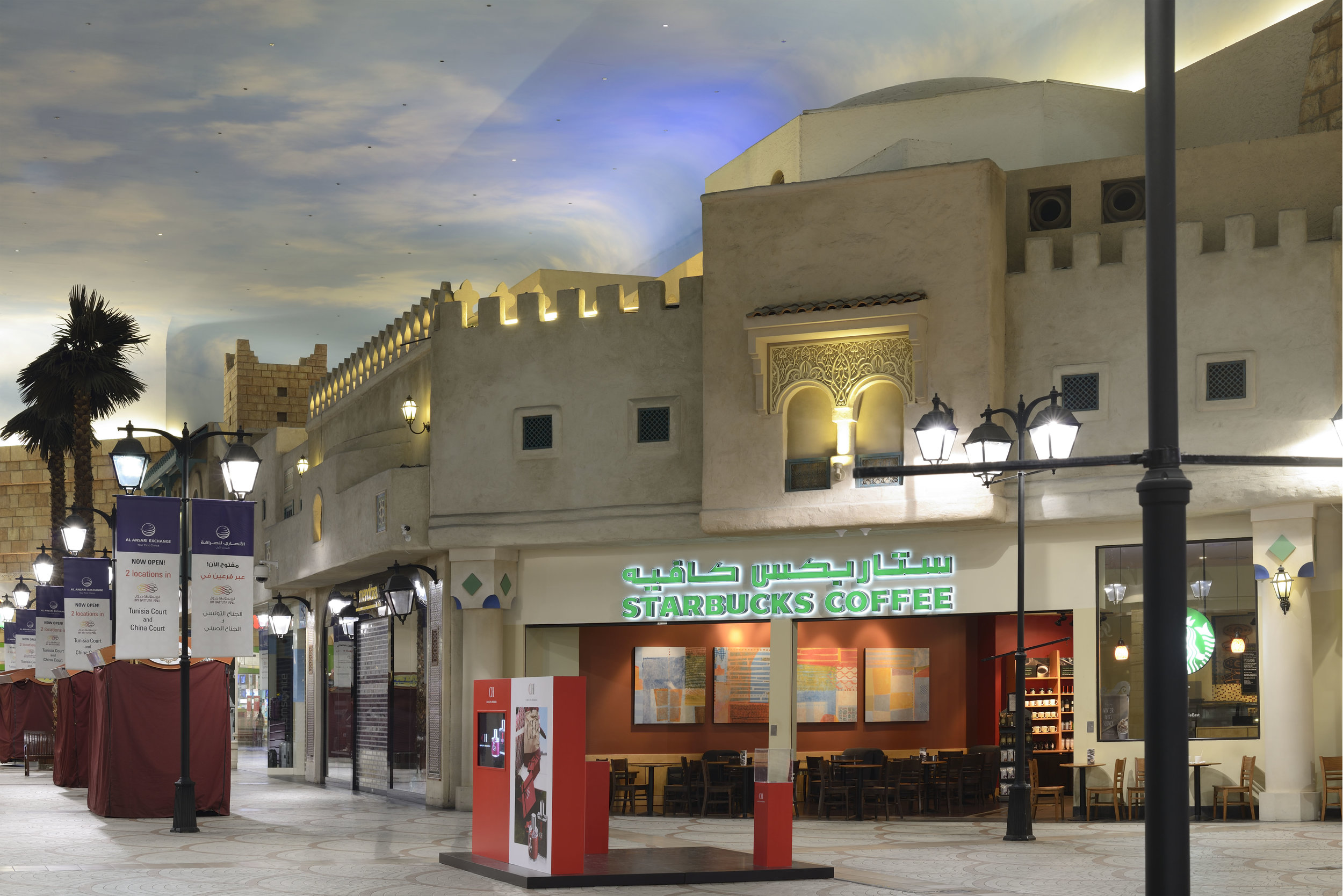Starbucks, Tunisia Court, IBN Battuta Mall, Dubai, UAE
Starbucks, Tunisia Court, IBN Battuta Mall, Dubai, UAE
Tunisia was the first stop on 14th century poet/scholar IBN Battuta’s journey throughout the Islamic world. This modern mall honoring his epic journey is divided into six courts, each containing a sort of simulacra of a region visited by Battuta (China, India, Persia, Egypt, Tunisia, Andalusia).
Coffee was first discovered in Ethiopia in the 9th century when a shepherd noticed heightened energy in his sheep after they ate wild coffee berries. Coffee consumption as we know it was born in the 14th century when roasting began in the Red Sea port of Al- Mokha in what is now modern day Yemen.
In expanding their franchise to Dubai the Seattle based corporation Starbucks is bringing its brand of coffee back to the Arabian Peninsula, where it all began.
IBN Battuta Mall: More to Explore, 2016.
http://www.ibnbattutamall.com/en/about-mall
IBN Battuta Mall is the largest themed shopping mall in the world, boasting six country-themed courts. Each of the courts is based on the travels of poet and religious inspiration, IBN Battuta. The courts of Tunisia, Egypt, Persia, India, China, and Andalusia, are ornately decorated to embody the culture, style, and history of the countries that they represent.
The mall describes Battuta as “a young man of just 21 years” who “set out to explore the world” and whose journey “spanned 24 years and six different lands.” The mall’s website states “ His life and travels are an inspiration to us. It has influenced our mall in design and spirit. You’ll see it in the interior themes and names of our courts...At IBN Battuta Mall, shopping, dining and entertainment comes together with history, culture and the story of a remarkable adventure. It is what makes us one of Dubai’s most exciting shopping and retail destinations.”
The facsimile only goes so far however. Although each wing of the mall reflects the aesthetics of the country it represents, many of the commercial spaces are occupied by large global brands such as Starbucks, The Gap, H&M, Claire’s, Sephora, The Body Shop, and Sketchers. These companies often have no connection to the country of the wing in which they reside, nor do their products reflect the customs of the replicated culture. Mall administration plans to expand, which “will bring an additional 600 stores” to join current shops and franchises.
Ibn Battuta: Travels in Asia and Africa 1325-1354
http://sourcebooks.fordham.edu/halsall/source/1354-ibnbattuta.asp
In June 1325, IBN Battuta set off on what would be a 29 year holy pilgrimage (known as a Hajj) to Mecca. He traveled “about 75,000 miles, visiting the equivalent of 44 modern countries.” Battuta recounts in his travel diaries that having to “quit all my friends and tear myself away from my home.” Leaving his parents “weighed grievously” upon him and he explains that “both they and I were afflicted with sorrow.” During his mission Battuta sold his donkey and the majority of his worldly possessions in order to “travel light” in his quest for spiritual enlightenment.
In each country Battuta visited he recalled the diversity and abundance of goods available. He marveled at merchants and their wares, at the increasingly commercial world before him, at beauty, luxury, and excessive wealth.
Of Persia (one of the areas replicated in the IBN Battuta Mall) Battuta described an impressively large market with “Every trade is grouped separately in it.” He wrote “I passed through the jewelers' bazaar, and my eyes were dazzled by the varieties of precious stones that I beheld. They were displayed by beautiful slaves wearing rich garments with a waist-sash of silk, who stood in front of the merchants, exhibiting the jewels to the wives of the Turks, while the women were buying them in large quantities and trying to outdo one another.”
Beth Kowitt, M.H. Alshaya: The Mystery Company Importing Americana to the Mideast, Feb 12, 2013
http://fortune.com/2013/02/12/m-h-alshaya-the-mystery-company-importing-americana-to-the-mideast/
Based out of Kuwait, M.H. Alshaya is responsible for bringing many of America’s largest brands to the middle east. Although M.H Alshaya is famously tight lipped about their finances, the company has over “70 brands in its portfolio” and have stores in 19 countries. Their portfolio includes lucrative American brands such as Starbucks, The Cheesecake Factory, IHOP, American Eagle Outfitters, Victoria’s Secret, Pottery Barn, William-Sonoma, Pinkberry, and more.
Kowitt explains the success behind M.H Alshaya’s model explaining that there “are few homegrown competitors to fend off; in fact, consumers in the Middle East seek out Western brands because they crave authentic American experiences.” However the true success of the company may not be providing the middle east with an exact America replica but in their ability to tweak a brand enough to appeal to a vastly different culture while still retaining recognizable brand elements. M.H. Alshaya uses guides to help franchises “navigate the cultural, religious, and regulatory protocols of the region” while also scouting locations and helping “eateries modify their menus to comply with Islamic dietary laws.”
Kowitt also attributes part of M.H Alshaya’s success to the emergence of a powerful mall culture in the middle east. Brands that have moved to the the Gulf have found that those are often some of “the best-performing stores in their systems” and Alshaya is “the driving force behind much of the brand migration.”
Andrea Anastasiou, Atmosphere matters at UAE coffee shops such as Starbucks, March 3 2014
http://www.thenational.ae/business/the-life/atmosphere-matters-at-uae-coffee-shops-such-as-starbucks
Starbucks has been renovating and tailoring their store’s interiors to best serve customers of different regions and cultures, specifically the United Arab Emirates. One strategy is to “incorporate local elements into the design.” A Starbucks location in Dubai was redesigned to combine “a modern cafe setting with Arabic coffee heritage” by incorporating “banquet-style seating” among more traditional western tables.
A Brief History of Coffee Houses as Meeting Places,
http://www.mabellehouse.com/en/Blog/A-Brief-History-Of-Coffee-Houses-as-Meeting-Places-132
The history of commercial coffee is one the developed right alongside the minds of our worldly thinkers. Coffee houses, which initially began in the Middle East, have always been a place of conversation and exchange of ideas.
Much like the coffee shops of the old world, todays malls and shopping centers have now become the meeting place for young thinkers and business people of the world.














































